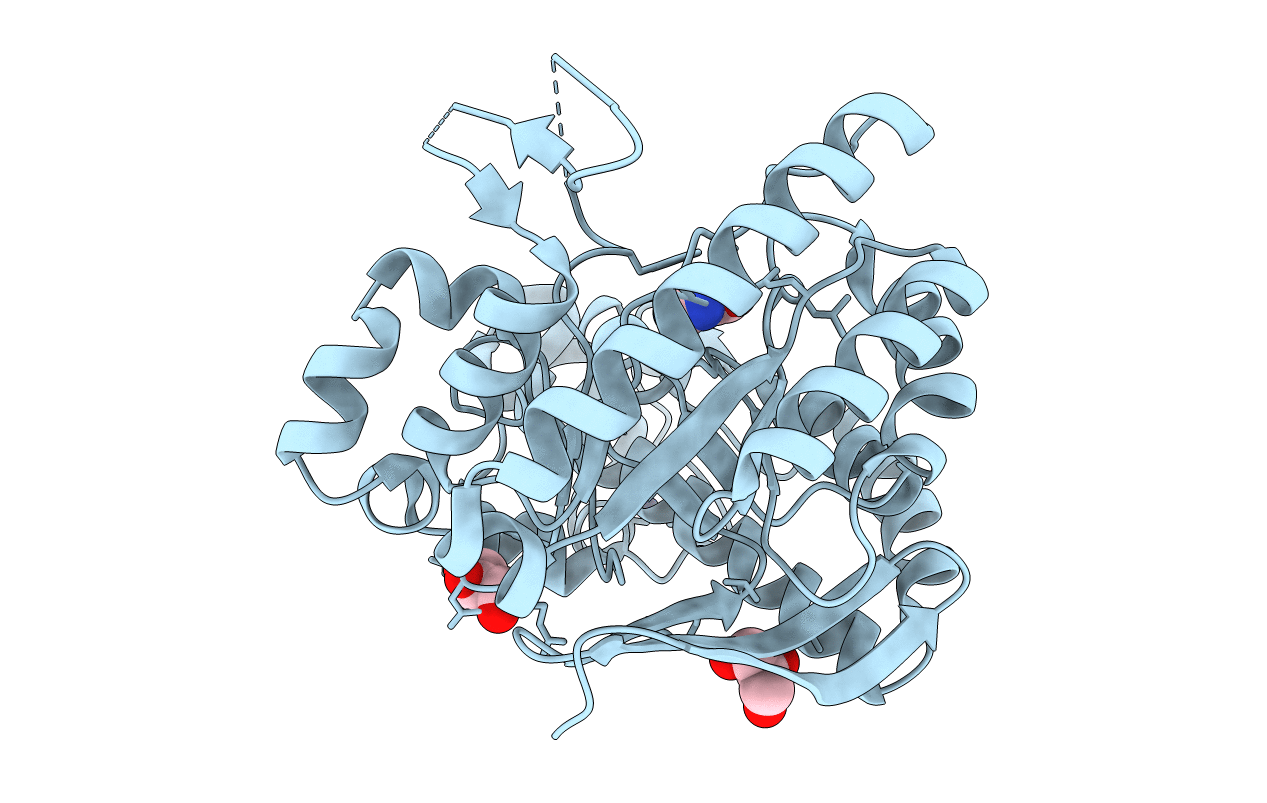
Deposition Date
2011-05-15
Release Date
2012-05-16
Last Version Date
2023-09-13
Entry Detail
PDB ID:
3S1G
Keywords:
Title:
tRNA-Guanine Transglycosylase in complex with lin-Benzohypoxanthine Inhibitor
Biological Source:
Source Organism:
Zymomonas mobilis (Taxon ID: 542)
Host Organism:
Method Details:
Experimental Method:
Resolution:
1.82 Å
R-Value Free:
0.21
R-Value Work:
0.16
R-Value Observed:
0.16
Space Group:
C 1 2 1


